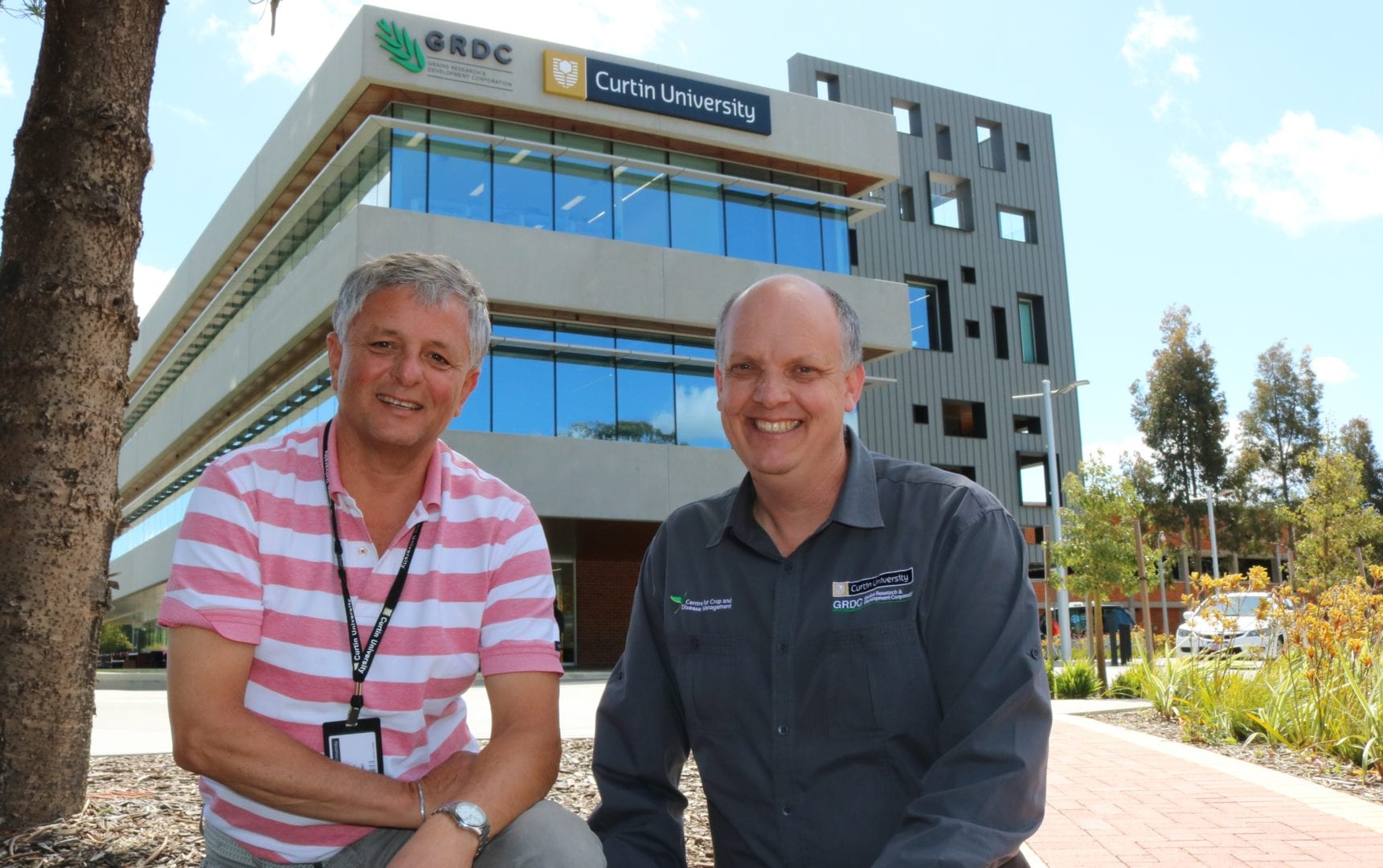A $100 million national research centre will receive an $18 million funding extension over three years to build on research that has reduced the economic impact of crop disease for Australian growers.
 Supported by Curtin University and the Grains Research and Development Corporation (GRDC), the Centre for Crop and Disease Management (CCDM) was the result of the first bilateral research agreement between the GRDC and an Australian university.
Supported by Curtin University and the Grains Research and Development Corporation (GRDC), the Centre for Crop and Disease Management (CCDM) was the result of the first bilateral research agreement between the GRDC and an Australian university.
The GRDC will invest $6 million per year to at least 2022, enabling the centre to continue its national research excellence in fungicide resistance, molecular genetics and farming systems.
CCDM Co-Director (agronomy and agribusiness) Professor Mark Gibberd said this was excellent news for the centre and a testament to the research discoveries made by CCDM researchers since it was established three years ago, in 2014.
“It has been fantastic seeing our hard work make a difference over the past three years,” Professor Gibberd said.
“For instance, we have rapidly detected many cases of fungicide resistance and provided real-time advice on the efficacy of fungicide chemistry, while at the same time developing field-based evidence for anti-resistance strategies.
“We have received incredible support from industry on a national scale, including disease sample collection support, field trial and lab experiment collaboration and joint coordination of forums and workshops.”
CCDM Co-Director (scientific programs) Professor Karam Singh said the continuing significant investment from Curtin University and GRDC will enhance the impact of science discoveries as CCDM researchers developed the genetic tools needed to breed disease resistant varieties.
“Over the past three years, we have gained more insight into the interaction between fungal pathogens and their cereal host plants,” Professor Singh said.
“With this knowledge, we have been able to unravel aspects of the pathogens’ arsenal for infection and this has helped speed up the breeding process for disease resistance.
This research, along with new outcomes from our pulse and canola disease resistance programs, has meant CCDM is well placed to contribute research to the development of crops with increased disease tolerance or resistance for growers.”
GRDC Chairman John Woods said the CCDM investment extension was evidence of the successful way in which the bilateral agreement had improved the efficiency of the delivery of research outputs for the benefit of Australian grain growers.
“By investing in research, such as the work carried out at the CCDM, we can help address the $1.5 billion crop disease problem faced by Australian grain growers every year, and ensure growers and advisers receive important management information so they can make necessary changes at the paddock level,” Mr Woods said.
“As a result of the CCDM investment, Australian growers are saving millions of dollars, making this value-for-money investment in the CCDM vital to the profitability of the nation’s agricultural industry.
“The GRDC and Curtin University partnership in the CCDM has demonstrated how, with appropriate resourcing, targeted focus and world class expertise we can deliver outcomes to address some of the most difficult and costly issues for growers. That’s why GRDC is pleased to continue this partnership with Curtin University to 2022.”


